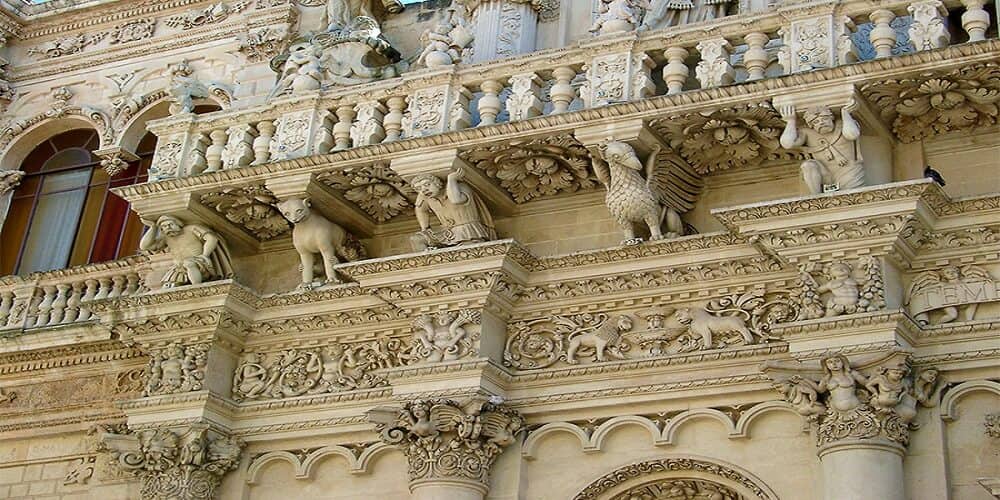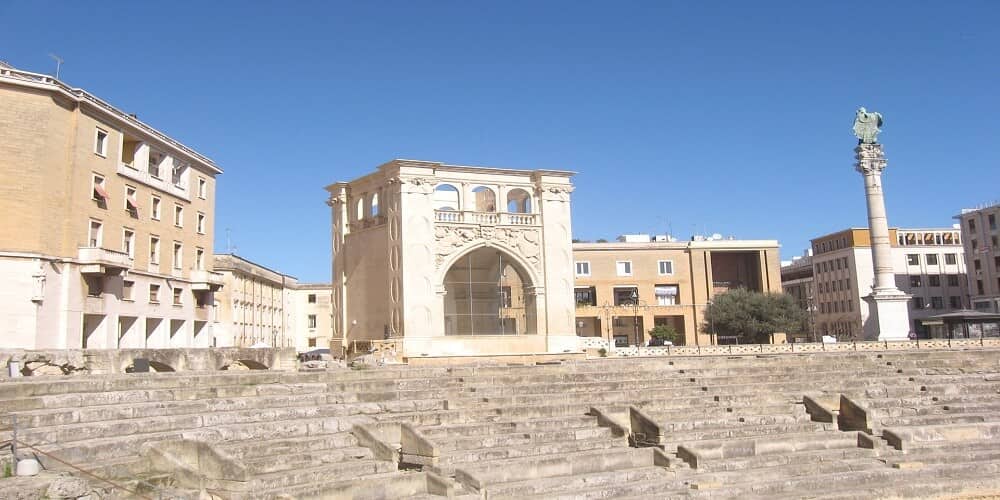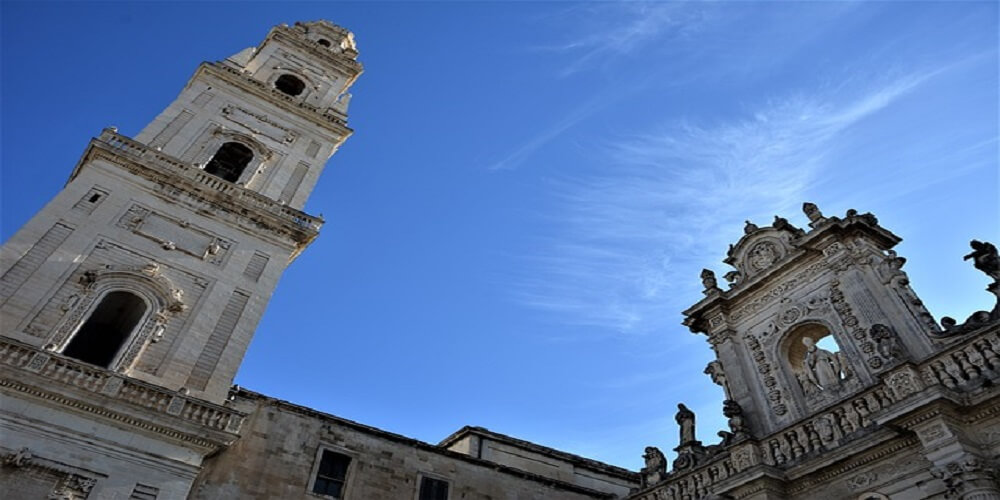Lecce stone
Lecce has a vast artistic heritage dating back to different periods, from the Roman to the Renaissance. The Spanish domination in the seventeenth century, led to the spread of Baroque art that here developed with a very special taste thanks to the creativity and imagination of the Salento artists. Lecce is called "Lady of the Baroque", some erroneously call it the Florence of the South, perhaps because of the richness and beauty of its artistic heritage that has no equal in all cases. The historic centre of Lecce is a maze of hundreds of alleys and streets. Strolling along the streets you will be amazed by the Baroque palaces with their characteristic balconies and flowered courtyards, the numerous churches, the monuments built with the Lecce stones, famous for its warm and bright colour. This stone, which is a compact and soft limestone, has been skilfully worked in the past by master stonemasons of the area, to create beautiful and sophisticated decorations that are of an extraordinary beauty. Lecce is not distinguished by its baroque art only, but also by its strategic position in the heart of Salento, a famous area for the production of wines and gastronomic delicacies, for the beauty of its crystalline beaches and charming countryside with centuries-old olive groves. In the old city streets, one can find not only craft shops where objects of papier-mâché and Lecce stone are made, but also places serving typical street food of the Apulian tradition.
Churches and monuments in Baroque style

Porta Napoli is the way to enter the city centre which can be accessed either on foot or by bike. Proceeding along the lanes, you enter piazzetta Addolorata which hosts Santa Maria di Costantinopoli church. In Piazzetta Baglivi, you can admire Santa Maria della Provvidenza church. In Umberto I street one can admire the sixteenth-century Palazzo Adorno, with its beautiful decorations that enrich its surfaces and the Basilica of Santa Croce, the most significant example of Lecce Baroque, especially for the splendor of the decorations of the main façade. Moving towards the centre, we arrive at Piazza Sant'Oronzo, the beating heart of the city and the meeting point par excellence, where the majestic Colonna del Santo patrono is located. This Colonna was built by the inhabitants as a symbol of thanksgiving for saving the city from the plague that loomed in the seventeenth century over the whole Kingdom of Naples. If you are in Lecce and want to see the most picturesque and hidden corners of the city, we recommend Velo Service, which organizes interesting guided tours on foot, by bike, bike-rickshaw, segway, in search of history and tradition.
The ancient origins of Lecce

Lecce, originally a Messapian city, had a short period of Greek domination. From the first century BC, the city was under the control of the Romans who remained there for about five centuries. In this period the great Roman Amphitheatre was built and it is located in piazza Sant'Oronzo. It was discovered in the early twentieth century during the construction of the Bank of Italy building. Another important work is the Roman Theatre, capable of hosting 5,000 people. Lecce suffered the domination of the Normans, followed by the Swabians and Angevin. During the fifteenth century, Lecce became an important commercial and cultural centre in Salento and was enriched with beautiful buildings and monuments in the Baroque style. In this period, the Castle of Charles V and the city walls were built, to defend the city from the incursions of Turks. At the end of the nineteenth century and at the beginning of the twentieth century, Lecce began to develop outside the walls. In 1927 it became an independent province. Thanks to the immense artistic heritage and its strategic position in the Salento peninsula, Lecce today is an important tourist destination that should not be missed.
About the author
Written on 25/02/2019



Vito Stefano Brunetti